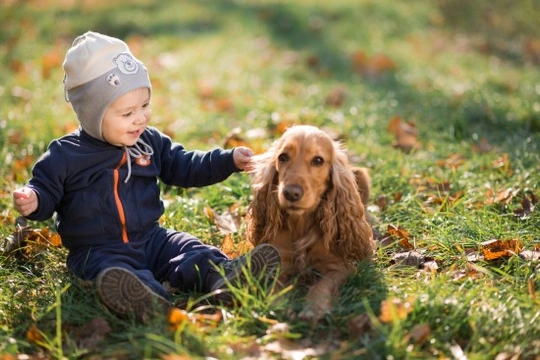
Teaching your children to respect your dog
Even if you do not have a dog of your own, it is important to teach your children about dogs and correct behaviour around them, for their own safety and to ensure that they do not grow up afraid of dogs. If you have a dog of your own within the home, this is of course especially important, and children of all ages from the time that they are old enough to get around by themselves should have a basic understanding of respect for your dog, which you can build upon as your child grows up.
Teaching kids to respect dogs not only makes sure that you stand the best chance possible of keeping your kids from getting hurt or even being bitten by a dog that they come into contact with, but also ensures that your child will not bother or terrorise your dog! Most dogs that are raised with children are very tolerant of them, and will put up with a reasonable amount of harassment or being pulled around; but even if your dog is an angel, this is not an ideal state of affairs, and you should think about your dog’s happiness and wellbeing as well as that of your children.
Basic rules with your own dog
As soon as your child is a toddler or old enough to move around the house and come into contact with your dog of their own volition, it is time to set some very basic rules. These should include not waking up the dog when they are sleeping, and not touching them or interfering with them when they are eating.
You should also teach them not to feed your dog treats or their own meals unless you say it is ok, not to pull their tail, poke their faces, or try to dress up or ride your dog!
Basic rules with strange dogs
It is important to establish in your child’s mind that even if their own dog is incredibly tolerant and well behaved, not all dogs are like this. It is important to instil respect of strange dogs into your child, but not fear, so while it is important to explain that strange dogs might possibly hurt them, do not make this point the focus of your teaching. Address things from the viewpoint of respecting dogs rather than fearing them, and teach your child about manners and being polite rather than avoiding being bitten.
Rules to teach your child around strange dogs should be to never approach or touch a strange dog without the owner’s permission, always to stand a safe distance back from the dog itself when you ask, accept no for an answer, and never to feed or give treats to someone else’s dog without permission.
You should also teach them that if they encounter a dog off the lead that approaches them, not to run, and to look for the owner or handler of the dog for direction.
Teaching your children how to handle dogs
It is also a great idea to teach your child pro-actively about how to handle and touch your dog, and other dogs that they have permission to play with. This is something that should happen when the child is a little older, and involve elements such as how to pat and stroke a dog, how to tell if a dog is friendly or not, when to leave a dog alone, and where not to touch a dog. You should also introduce your child to the basics of hygiene and safety at this stage, and teach your kids not to kiss your dog, not to allow the dog to lick them, and always to wash their hands after touching the dog.
Involving your children in your dog’s care
Getting your child involved in the day to day care and routine where your dog is concerned is an excellent idea, as this will help to bond your child with your dog and feel empathy for them, and teach your child intuitively to know how your dog is feeling, when they want company and when to leave them alone.
Take them out on walks with you and your dog, encourage them to have a hand on the lead with you, instil in them the importance of routine for dogs, why owning a dog is a privilege, and why your dog deserves their love and respect, and is not the same thing as a toy.
You can also begin to teach older children under ten about basic training commands, not only how to give them but when to use them! No child under the age of their middle teenaged years should even be considered as an appropriate person to be the main caregiver for your dog. However, involving your child in your dog’s care as soon as they are old enough to join in will help to build the foundations of your children’s relationship with all of the dogs they will meet throughout their lives, and ensure that both dog and child love and respect each other, and stay safe.



